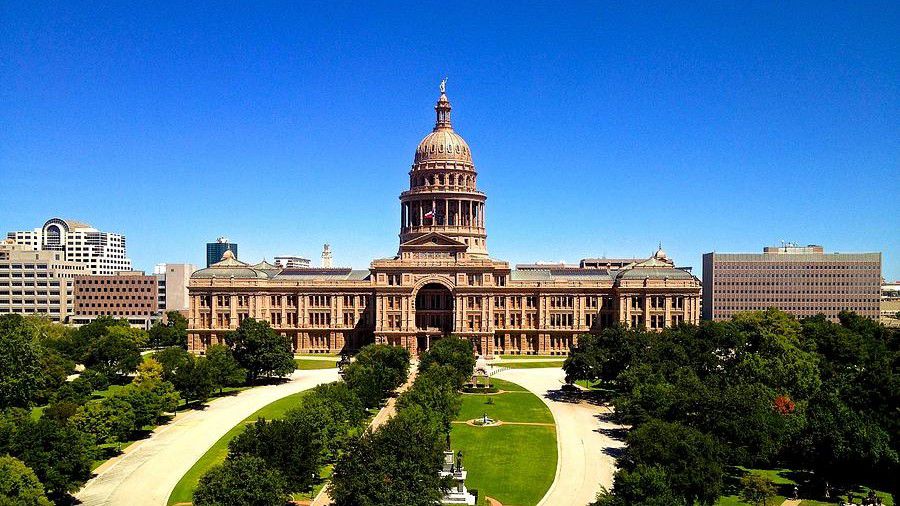TEXAS — Texas lawmakers released a proposed congressional map Monday that included two new districts in Austin and Houston, but with the potential for creating a net loss for predominantly minority districts in the state despite a population growth over the last decade fueled by people of color.
Republican lawmakers, while seeking to retain the majority overall, took a less aggressive approach than expected in their redrawing of the maps. Where they could have redrawn to create Republican-dominated districts, they instead looked to bolster support for incumbents with a possibility of picking up a more competitive seat in the Rio Grande Valley.
Minorities in Texas made up 95% of the state’s overall population growth, according to the 2020 U.S. Census. Democrats had hoped to capitalize on this to pick up more seats in minority-heavy areas, particularly the fast-growing suburbs of North Texas, Austin and Houston.
The proposed redistricting would make that difficult for Democrats. Considering eligible voters, the current congressional map has 22 districts with white majorities, eight with Hispanic majorities, and one with a Black majority. Five districts have no clear majority. If approved, the new map would increase the white majority districts to 23, decrease the Hispanic majority districts to seven, and eliminate a Black-majority district. Districts with no majority would increase to eight under the new plan.
Texas’ Hispanic population grew by nearly 2 million in the last decade, bringing their overall percentage of the state’s population of 39.26% to within half a percentage point of the total white population, which was 39.75%, according to the U.S. Census.
Despite the Hispanic population growth, the proposed map would not create a Hispanic-majority seat, which David Wasserman, a political analyst for the Cook Political Report with Amy Walter, a nonpartisan group based in Washington, D.C., suggested could lead to a lawsuit.
House seats in the Rio Grande Valley would shift to make at least one of them, District 15, competitive with a Republican lean. Rep. Vicente Gonzalez, D-McAllen, currently holds that seat, which he won in 2020 with a slim 3 percentage point lead over his Republican challenger. President Joe Biden beat former President Donald Trump by less than two percentage points in 2020 in this district.
Both the Republicans and Democrats are vying to gain more voters in this Valley’s population, which was seen for several election cycles as leaning solidly blue. While Biden won 58% of the overall Texas Latino vote to Trump's 41% in 2020, many of the Valley’s Hispanic voters cast their ballots for Trump and down-ballot Republicans, drawing national attention to the region with analysts questioning what was causing the voter’s rightward shift.
The proposed map faced fierce backlash late Monday from Hispanic and Black civil rights groups.
"The proposed map vastly diminishes the voting strength of minorities all around the State by either packing them into districts already electing minority candidates of choice or cracking them by pushing them into districts dominated by conservative White voters," Gary L. Bledsoe, the president for the Texas State Conference of NAACP, wrote in an emailed statement Monday. "As the State has garnered 2 new Congressional seats on the backs of its minority population, it has sought to put forth a proposed Congressional map that is clearly retrogressive."
Domingo Garcia, the national president of the League of United Latin American Citizens, or LULAC, said in a press conference Monday that he still held out hope that the Republicans would "do the right thing"and redraw the map.
“We believe it is unconstitutional. It is illegal," he said. "The fact of the matter is there should probably be around 11 Latino opportunity districts, and this is political partisanship gone berserk.”
Unless the proposed map is redrawn, the state can expect a legal challenge from the LULAC, one of the largest and oldest Hispanic and Latino civil rights organizations in the U.S., Garcia said.
LULAC has filed lawsuits on redistricting every decade since 1970.
Overall, the map, which was drawn up by a Republican-led state Senate committee, appears to help incumbent Republicans keep their seats in districts seen by Democrats as targets to flip in recent election cycles. At the same time, two seats currently held by Democrats that Republicans have targeted, one in Dallas and one in Houston, would likely remain blue in the proposed version.
If approved, the proposed map would create 13 Democratic-leaning seats, 24 Republican-leaning seats and one highly competitive seat, according to an analysis by FiveThirtyEight, a website that focuses on politics and opinion polls analysis.
The proposed map could also pit some incumbents against each other because their current districts would create overlap. In Houston, Reps. Al Green and Sheila Jackson Lee, both Democrats, would suddenly be competing for the same seat.
Monday’s map is the first draft of what likely will change before it can get to Gov. Greg Abbott’s desk for signing. Once approved, the new district map will be the basis for voters when they go to the polls in the Nov. 2022 midterm elections.
Redistricting maps are redrawn every 10 years to accommodate for population change as recorded by the U.S. Census. In Texas, the legislature uses that data to determine where district lines will fall for seats in both chambers of the Legislature, the state’s U.S. House seats and the School Board of Education. The global pandemic delayed the release of the Census’ results this year.
Texas currently has 36 congressional seats made up of 23 Republicans and 13 Democrats. By picking up two more seats, the state will have a total of 38 seats in the U.S. House in 2022.
Capital Tonight's Karina Kling and Niki Griswold contributed to this report.



